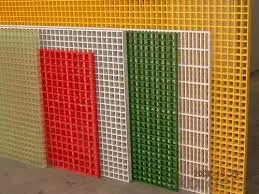
-
 Afrikaans
Afrikaans -
 Albanian
Albanian -
 Amharic
Amharic -
 Arabic
Arabic -
 Armenian
Armenian -
 Azerbaijani
Azerbaijani -
 Basque
Basque -
 Belarusian
Belarusian -
 Bengali
Bengali -
 Bosnian
Bosnian -
 Bulgarian
Bulgarian -
 Catalan
Catalan -
 Cebuano
Cebuano -
 China
China -
 China (Taiwan)
China (Taiwan) -
 Corsican
Corsican -
 Croatian
Croatian -
 Czech
Czech -
 Danish
Danish -
 Dutch
Dutch -
 English
English -
 Esperanto
Esperanto -
 Estonian
Estonian -
 Finnish
Finnish -
 French
French -
 Frisian
Frisian -
 Galician
Galician -
 Georgian
Georgian -
 German
German -
 Greek
Greek -
 Gujarati
Gujarati -
 Haitian Creole
Haitian Creole -
 hausa
hausa -
 hawaiian
hawaiian -
 Hebrew
Hebrew -
 Hindi
Hindi -
 Miao
Miao -
 Hungarian
Hungarian -
 Icelandic
Icelandic -
 igbo
igbo -
 Indonesian
Indonesian -
 irish
irish -
 Italian
Italian -
 Japanese
Japanese -
 Javanese
Javanese -
 Kannada
Kannada -
 kazakh
kazakh -
 Khmer
Khmer -
 Rwandese
Rwandese -
 Korean
Korean -
 Kurdish
Kurdish -
 Kyrgyz
Kyrgyz -
 Lao
Lao -
 Latin
Latin -
 Latvian
Latvian -
 Lithuanian
Lithuanian -
 Luxembourgish
Luxembourgish -
 Macedonian
Macedonian -
 Malgashi
Malgashi -
 Malay
Malay -
 Malayalam
Malayalam -
 Maltese
Maltese -
 Maori
Maori -
 Marathi
Marathi -
 Mongolian
Mongolian -
 Myanmar
Myanmar -
 Nepali
Nepali -
 Norwegian
Norwegian -
 Norwegian
Norwegian -
 Occitan
Occitan -
 Pashto
Pashto -
 Persian
Persian -
 Polish
Polish -
 Portuguese
Portuguese -
 Punjabi
Punjabi -
 Romanian
Romanian -
 Russian
Russian -
 Samoan
Samoan -
 Scottish Gaelic
Scottish Gaelic -
 Serbian
Serbian -
 Sesotho
Sesotho -
 Shona
Shona -
 Sindhi
Sindhi -
 Sinhala
Sinhala -
 Slovak
Slovak -
 Slovenian
Slovenian -
 Somali
Somali -
 Spanish
Spanish -
 Sundanese
Sundanese -
 Swahili
Swahili -
 Swedish
Swedish -
 Tagalog
Tagalog -
 Tajik
Tajik -
 Tamil
Tamil -
 Tatar
Tatar -
 Telugu
Telugu -
 Thai
Thai -
 Turkish
Turkish -
 Turkmen
Turkmen -
 Ukrainian
Ukrainian -
 Urdu
Urdu -
 Uighur
Uighur -
 Uzbek
Uzbek -
 Vietnamese
Vietnamese -
 Welsh
Welsh -
 Bantu
Bantu -
 Yiddish
Yiddish -
 Yoruba
Yoruba -
 Zulu
Zulu
Exploring Alternatives to Fiberglass Stack Liners for Improved Efficiency and Durability
Exploring Fiberglass Stack Liner Alternatives
In recent years, the need for reliable and efficient stack liners in various industrial applications has led to a growing interest in alternative materials to fiberglass. Traditionally, fiberglass stack liners have been favored for their excellent durability, corrosion resistance, and relatively lightweight properties. However, the quest for alternatives is driven by factors such as cost-effectiveness, availability, and enhanced performance in extreme conditions.
Exploring Fiberglass Stack Liner Alternatives
Another viable option is the use of high-density polyethylene (HDPE) liners. Known for its resilience and chemical resistance, HDPE is a thermoplastic that can withstand corrosive environments while remaining lightweight. This makes it easier to install and handle compared to heavier materials like fiberglass. Furthermore, HDPE offers the advantage of being less prone to cracking and chipping, which can be a concern with traditional fiberglass. However, it may not perform as well in extremely high-temperature applications, limiting its use in certain industries.
fiberglass stack liner alternative

Metallic linings, such as stainless steel or carbon steel, are also gaining traction as alternatives. These materials provide excellent strength and durability, making them suitable for heavy-duty applications. Stainless steel, in particular, boasts superior corrosion resistance, extending the lifespan of stack liners in demanding environments. However, the weight and cost of metallic liners can be significantly higher than fiberglass or other alternatives, which may deter some enterprises from choosing them.
Additionally, the development of advanced composite materials has emerged as a third alternative. Composites are engineered to combine the best properties of different materials, offering high strength-to-weight ratios, corrosion resistance, and thermal stability. These innovative materials can be tailored to meet specific requirements, providing customizable solutions for a variety of industrial needs. While composite technology is still evolving and can be more expensive initially, the long-term benefits could outweigh the initial investment by reducing downtime and maintenance costs.
In conclusion, while fiberglass stack liners have long been the material of choice for many industrial applications, the exploration of alternatives offers exciting possibilities. Ceramic, HDPE, metallic, and advanced composite materials each have unique advantages and challenges. As industries seek more efficient, cost-effective, and durable solutions, the ongoing research and development of alternative stack liners will likely continue to evolve, paving the way for innovative approaches that enhance operational efficiency and sustainability in industrial processes.
Latest news
-
Exploring the Benefits of Top Hammer Drifter Rods for Enhanced Drilling PerformanceNewsJun.10,2025
-
High-Precision Fiberglass Winding Machine for GRP/FRP Pipe Production – Reliable & Efficient SolutionsNewsJun.10,2025
-
FRP Pipes & Fittings for Shipbuilding - Corrosion-Resistant & LightweightNewsJun.09,2025
-
Premium FRP Flooring Solutions Durable & Slip-ResistantNewsJun.09,2025
-
Premium Fiberglass Rectangular Tanks Durable & Lightweight SolutionNewsJun.09,2025
-
Tapered Drill String Design Guide Durable Performance & UsesNewsJun.09,2025









